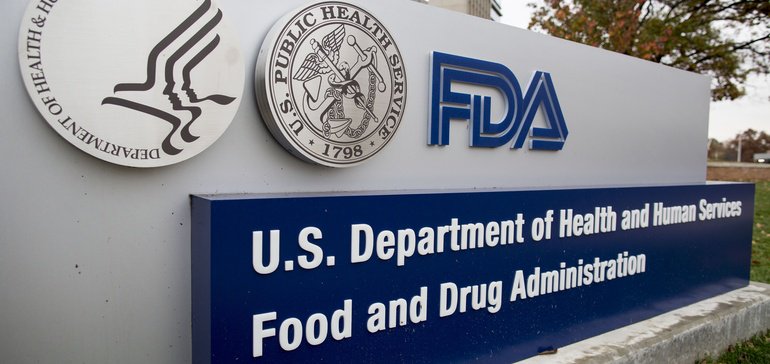Over more than three decades at the Food and Drug Administration, Janet Woodcock has seen the biotech industry mature from the early days of biologics into the drug-developing force it is today.
Woodcock is director of the FDA’s Center for Drug Evaluation and Research. She sat down with BioPharma Dive on the sidelines of the Biotechnology Innovation Organization’s annual convention in Philadelphia for a wide-ranging interview that touched on accelerated approvals, emerging clinical trial designs and her long-term concerns for the agency.
Renewed debate over accelerated approval
In the mid-1980s, when Woodcock first started at the FDA, a blue-ribbon commission had been formed in response to an outcry over whether the agency was approving new cancer drugs too slowly.
Now, the debate on how the FDA balances access to new medicines with the need for thorough supporting evidence has reversed. A recently published study, for example, showed only a minority of cancer drug indications approved conditionally during a a 25-year span were subsequently supported with data showing a survival benefit.
And over the weekend, one such approval — that of Eli Lilly’s Lartruvo for soft tissue sarcoma — was the focus of a plenary discussion at the annual meeting of the American Society of Clinical Oncology. Lartruvo was OK’d in 2016 on early signs of improved survival, but a confirmatory study showed the drug failed to lengthen patient lives.
“We have accelerated approval for a reason,” Woodcock said. “It wouldn’t be accelerated if it has the same results as regular approval.”
Criticism of the FDA’s review process is evergreen, Woodcock said, but the recent debate is particularly loud due to the price new cancer drugs can carry. Lilly’s drug, for instance, was priced on approval at roughly $17,000 per month. Sales surpassed $500 million in its brief time on market.
“The FDA hardly talks about this, but we’re really talking about what is the cost of failing to approve an effective therapy versus the cost of making a mistake and approving a therapy that is not effective,” she said. “There may be thousands of lives to be lost if you delay for another three years or whatever it takes to get more definitive evidence.”
“People say they want placebo-controlled trials, but I always ask them would you be willing to die to give a p-value?” she added.
An adaptive future for clinical trials
Woodcock has for years promoted clinical trials that use “adaptive” designs like master protocols to test multiple experimental therapies quickly. Now, she says, there’s tangible momentum behind adopting such ideas in R&D.
“I think we are past pure theory and we are in the early stages of the transformation,” she said, mentioning some companies have talked with the FDA about setting up their own continuous or adaptive trials.
One trial that Woodcock highlighted is GBM AGILE, a study run by nonprofit brain cancer groups that aims to test various glioblastoma treatments. It’s set to begin soon, and follows multiple late-stage trial failures in industry for the hard-to-treat, aggressive brain cancer.
Other adaptive studies include I-SPY2 in breast cancer and DIAN-TU in inherited Alzheimer’s.
Patient groups will drive further adoption, Woodcock predicted, as some have latched onto the idea as a way to improve disease outcomes in clinical trials. The CDER head argued the designs can make sense for industry too, particularly given concerns over R&D productivity and the high failure rates for experimental treatments.
“People think we need to fail early, fail fast. Having a continuous trial structure really enables you to do that,” she said. “Whereas setting up individual trials and doing them sequentially is a huge money pit.”
While that may be true, she acknowledged wariness among drugmakers. Adoptive designs require ceding some level of control over trial progress, and can come with competitive concerns for companies.
“It is a cultural transformation, but I believe it will occur,” she said. “It’s different and they are worried. Their assets are so valuable to them. I can guarantee you if there is success in a trial like this, they will flock to it.”
Optimism on continuous manufacturing
For all its biomedical innovation, pharma moves slowly to adopt new technologies in how it manufactures its products. While most industrial sectors have shifted to more continuous production processes, drugmakers mostly remain wedded to “batch” manufacturing.
In recent months, however, Woodcock has gained “even more optimism” on the future of continuous manufacturing among the industry her agency oversees.
New government interest from the Biomedical Advanced Research and Development Authority, or BARDA, has helped.
“I think their interest will drive the technology along and actually make it real,” she said.
Not all drugmakers are eager to see continuous manufacturing become mainstream. Generic makers, in particular, are anxious continuous production processes could be used by branded companies to prevent competition from companies using batch manufacturing.
The FDA has been able to stem some of that concern, Woodcock said, adding that generic companies have began discussing adopting the technology themselves. Generic finished dose production is “ideally suited” to continuous manufacturing, she said.
Early days for interchangeable biosimilars
Distrust among doctors remains the most concerning roadblock for biosimilar use, Woodcock said.
She referenced Bottle of Lies, a recent book that painted the generics industry overseas as corrupt and uncontrolled, as “stirring the pot on generics,” and further sowing distrust among clinicians for biosimilars.
While the FDA did issue guidance last month on interchangeable biosimilars, the agency needs to balance regulatory speed with addressing physician concerns.
“They’re worried,” she said. “It’s unfamiliar and interchangeability means their patient could be switched without their knowledge. They definitely don’t like that, so you’re sort of balancing two things there.”
Woodcock declined to predict when the first approval for an interchange product may come, but called interest “intense” among biosimilar makers. Some have sent in data to begin such reviews.
“We do not want to inflame the clinicians to the point where they refuse to allow biosimilars,” Woodcock said.
Long-term societal concerns
After more than 30 years at the FDA, Woodcock has a longer-dated perspective than most.
Looking forward, Woodcock worries about the “general current of anti-science” sentiment. But she also expressed concerns that some of the largest emerging health issues can’t and won’t be fixed by new medicines alone.
Nonalcoholic steatohepatitis, a liver disease sometimes dubbed a “silent epidemic,” as well as hypertension and metabolic issues were among the conditions she mentioned. For each, diet and lifestyle choices can play a large role in patient outcomes.
The FDA’s mandate also covers food, and that side of the agency may need to play a long-term role in awareness campaigns to counter such challenges.
“Eventually, this is going to become more of a crisis than it is,” she said. “The drug center will be asked to, and we will, approve medications for these problems, but that’s not how to treat them.”








